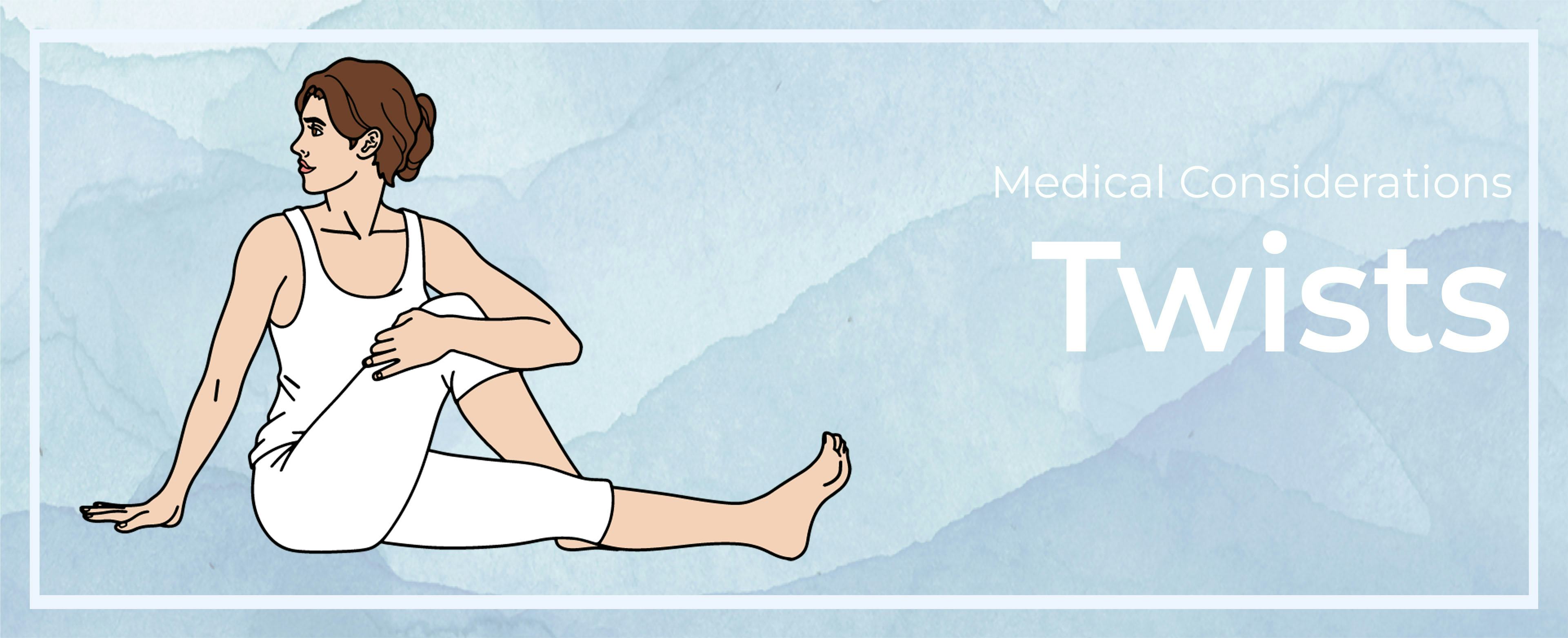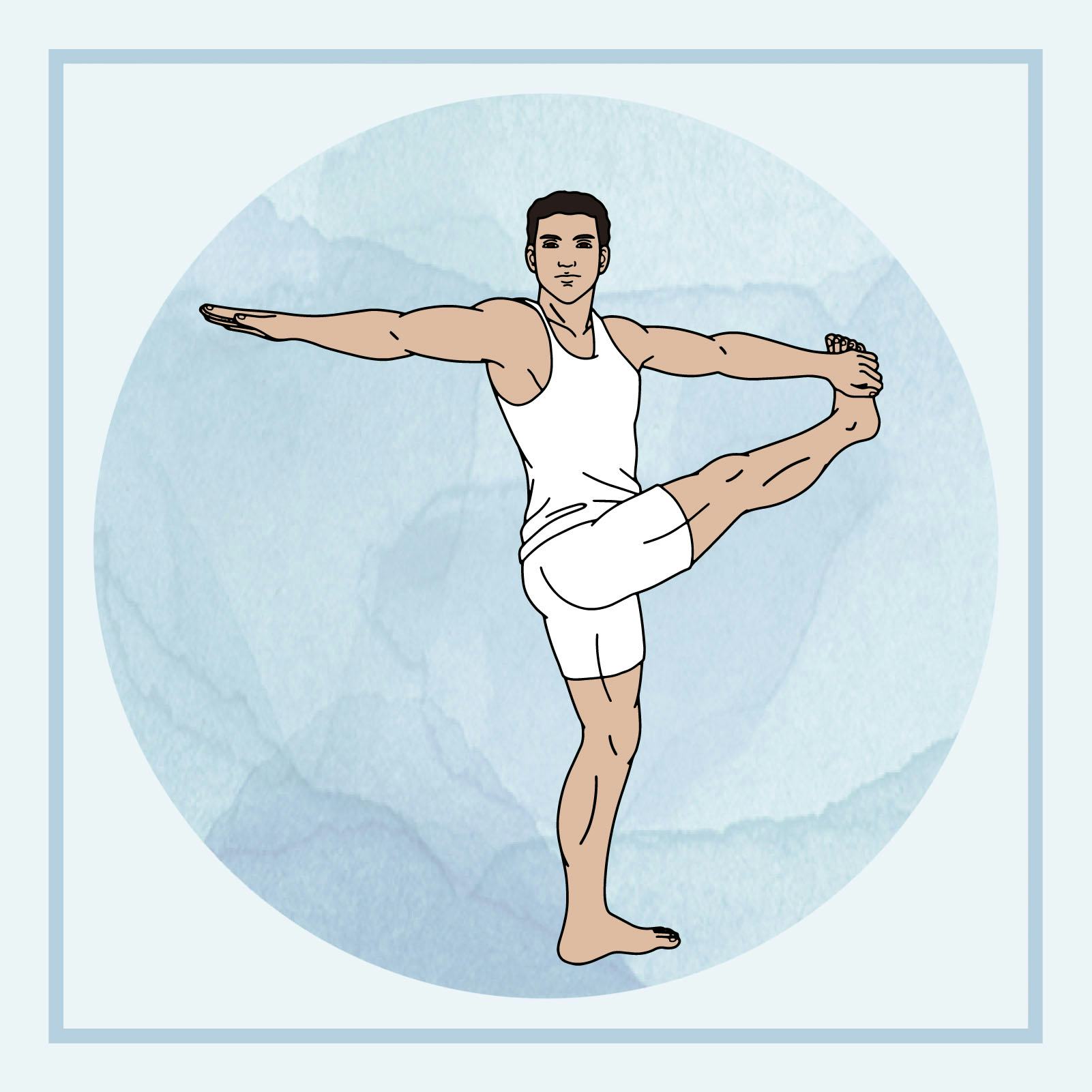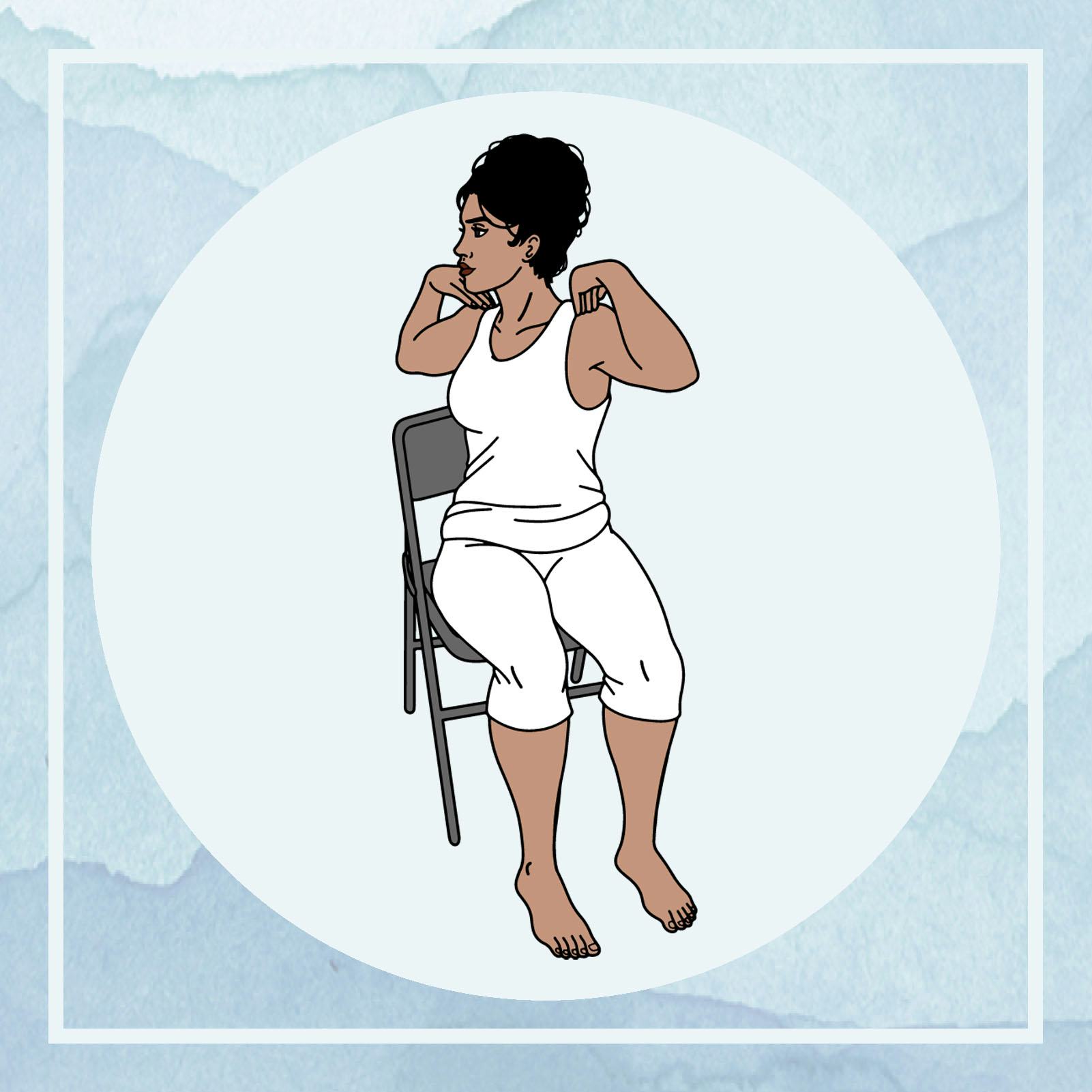‹ Resources![]()
![]()
![]()
Potential contraindications:
Medical Considerations for Twists
Asana Focus: Twist Poses

Description of Physical Action
Twists are rotation movement in the transverse plane. Twist postures generally involve rotation of the rib cage and shoulder girdle in an opposing direction of the pelvis. Different twists target the upper, middle, and lower portions of the torso depending on where the emphasis of the rotation is focused. The foundation of Twists may be from seated, standing, kneeling, or supine positions and may induce a warm, flush sensation when the asanas are held for an extended period.

Valued experience over centuries of practice, and historically described benefits of twist asanas:
- Improve spinal joint flexibility
- Increase sense of spinal length in upright postures because spinal rotation is a component of spinal extension
- Increase core strength due to abdominal muscle contraction (primarily internal & external obliques)
- Improve back-muscle strength
- May increase bone density
- Recruit strong action of the deepest spinal muscles required to rotate the vertebrae
- Increase shoulder girdle range of motion
- Assist in a feeling of a lifted heart due to the stretch created across the chest
- Benefit digestion through circulatory "rinse and soak" of abdominal organs
- Stimulate digestion and elimination

Potential contraindications:
Variations are recommended for:
- Those that experience neck or back pain
- Individuals who have dislocated their collar bone
- Unstable spinal spondylolisthesis
- Recent disc injury to neck or back
- Osteoporosis or osteoporotic compression fractures
- People with spinal fusion
- People with significant scoliosis
- Knee pain or symptoms of giving way or sticking with twisting
- Recent spinal abdominal or pelvic surgery
- Painful hemorrhoids
- Esophageal reflux
- Advanced Pregnancy

